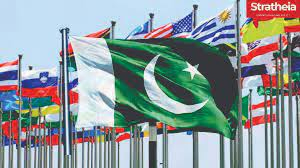East Asia is a region of immense economic significance and geopolitical importance characterized by a complex interplay of trade, politics, and power. This interdependence between these three factors has shaped the dynamics of the region which are influencing not only the prosperity and stability of individual nations but also the broader international environment.
Trade has long served as a catalyst for economic growth and development in East Asia. The region has witnessed remarkable economic transformation over the past few decades, driven by its robust trade networks. Countries like China, Japan, South Korea, and others have become global economic powerhouses, with exports and imports playing a central role in their success. East Asia’s economic prosperity is inextricably linked to international trade. The growth of supply chains, manufacturing hubs and technological innovation has fueled economic advancement. Trade liberalization policies, such as the Asia-Pacific Economic Cooperation (APEC) and regional trade agreements like the Comprehensive and Progressive Agreement for Trans-Pacific Partnership (CPTPP) have facilitated trade integration and helped the region achieve economic interdependence. East Asia has seen the emergence of regional trading blocs like the Association of Southeast Asian Nations (ASEAN) and the East Asia Summit (EAS).
These institutions have promoted economic cooperation, reduced trade barriers and enhanced cross-border investments and further deepening the region’s economic interconnectivity. The political situation of East Asia is marked by its rich diversity, historical tensions and shifting alliances. Politics not only influences trade policies but also shapes the regional balance of power.
East Asia has been a focal point for global power competition, particularly between the USA and China. The political maneuvering between these two giants affects trade dynamics, as it influences alliances, security agreements and economic dependencies. The U.S.-China trade war serves as a prime example of how politics can disrupt trade relations in the region. The distribution of power in East Asia is fluid, with a range of actors seeking to exert influence in different ways. National power and strategic interests play a crucial role in shaping the region’s dynamics.
The complex interplay of trade, politics, and power in East Asia shapes the region’s present and future. Trade is both a driver of prosperity and a potential casualty of political tensions while the distribution of power among nations can profoundly affect regional stability. The region’s evolving dynamics have broader implications for global affairs, making it imperative for nations in and beyond East Asia to navigate this intricate web of interactions with care and strategic foresight.
The USA consumes a significant amount of goods manufactured in Asia, which benefits the USA as a whole by providing consumers with cheaper products. However, this trade pattern simultaneously damages some US sectors and regions by harming local industries. What benefits consumers can lead to increased unemployment and lower wages, creating complex political dynamics within the USA? One of the characteristics of the USA is its tendency to not feel internal political concerns because it has a large scope to manipulate foreign policy. Therefore, the overall benefits of trading with Asia, the USA may find itself in a position where domestic political considerations force it to change its import policies from Asia. While this possibility is remote, it represents a serious threat to the interests of East Asia.
China sends about a quarter of its total exports to the USA. If the USA were to ban Chinese products or impose tariffs that render Chinese goods non-competitive, China would face a massive economic crisis. The same would happen in Japan and other Asian countries. Countries facing economic collapse can become unpredictable and may attempt to open up other markets, sometimes through political or military pressure. The USA is also sensitive to domestic political pressures exerted by groups disproportionately affected by cheap Asian imports. In response to internal pressures, the USA may seek to reshape economic relationships in the Pacific region. The USA cannot resort to protectionist legislation, supported by its military strength. Therefore, there is no real effective counter to the military or economic activities carried out by the USA in East Asia.
From a self-preservation standpoint, the last thing any country in the region wants is conflict. However, objectively, there is a massive power imbalance. Any change in US policies can cause chaos in East Asia and it is not even conceivable that there will be a change in US policy. The threat of US sanctions against China, for example, which could allow the USA to try to limit oil imports from China, strikes at the core of Chinese national interest.
Therefore, the Chinese must use their growing economic strength to develop a military option against the USA. They will simply act according to the basic principle of strategic planning: hope for the best and plan for the worst. In this context, China and Japan have no choice but to attempt to increase their military power for the next century. The United Nations will see this as a potential threat to US control over the Western Pacific. This will define defensive moves as offensive, which is objectively the case, no matter their personal intentions. Add to that the two continuously growing countries like South Korea and Taiwan and it’s certain that the region will become a powder keg in the 21st century.
The complex interplay of trade, politics, and power in East Asia shapes the region’s present and future. Trade is both a driver of prosperity and a potential casualty of political tensions while the distribution of power among nations can profoundly affect regional stability. The region’s evolving dynamics have broader implications for global affairs, making it imperative for nations in and beyond East Asia to navigate this intricate web of interactions with care and strategic foresight.






















